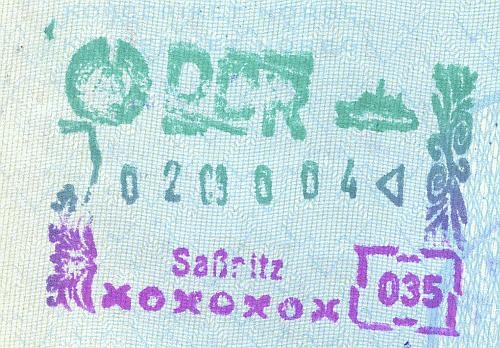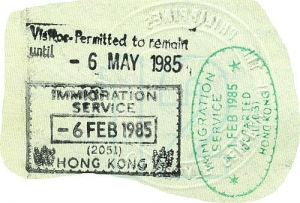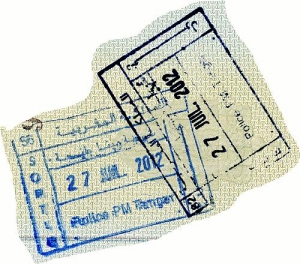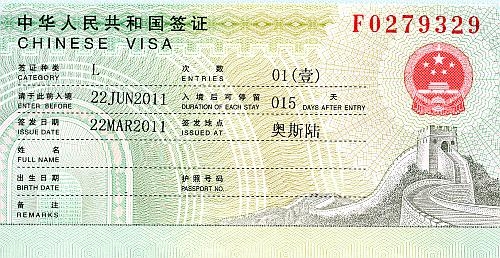I have always had a fascination of passports. Browsing through a passport is like opening a book to the world and to the life of the owner. After a few decades you’re likely to have a collection of them.
If you have been adventurous they will be filled with visas and entry and exit stamps from border crossings. I have, just for the fun of it, scanned my passports.
Looking into my collection of visas and stamps, each one brings up memories of what happened on that particular border crossing. Some took place on an airport, others on land or at sea – and some on almost no-man’s-land.
Last week I acquired my fifth passport. For the time being it is empty – or should I say – full of opportunities for immigration officers in the years to come. Of the four passports I have had, one was lost. As described in my last blog entry from Cuba, my passport was stolen and I had to put up much effort to get out of the country.
Luckily, the passport authority in my country – Norway – hands back an expired passport after cutting off a corner of it. Many of the fifty-odd countries I have visited did not ever give me a stamp in return for my visit. They are all European. The case is: So am I. I have stamps back to 1976, but since the early 1980s no European immigration officer has offered me his or her stamp. This of course means that a visa fee is saved, a border crossing is facilitated – but a memory is lost.
Passport generations
In Norway a passport expires after 10 years. Opening the passports I have in front of me leave me with two thoughts.
One is that I’m getting older. The first passport photo and the first official signature of mine are from 1976, at the age of fourteen. (Before that I would have been covered by my parents’ passports and by the Nordic Passport Union making passports unnecessary where we travelled, within the Nordic countries.)
My second thought is that security has been enhanced – for the better. Today it would be incomprehensible to accept a photo stapled unto an ID-page only accompanied by a relief stamp showing the name of the passport authority. This was the case with my first two passports; I can’t remember how the third one issued in 1996 looked like.
The one I received in 2003 had a laminated ID page, but was still not the state of the art that my most recent biometric e-passport has: An electronic chip containing “all” information about me, including fingerprints. I have my doubts as to the necessity of airport security formalities, but the development in terms of passport security has without doubt been necessary.
The stamp in the passport is a souvenir
I have never been one for souvenirs and gradually less so over the years. My prime souvenirs have been my videos and my photos, my diary notes and my (fading) memory. They are all visible on this blog and so is this extra souvenir, the passport contents.
Like all souvenirs some are more exciting than others. Some visa and stamp makers have gone lengths to create vivid, intricate, complex patterns of illustrations. Others are downright boring. Some are colourful, others are bland.
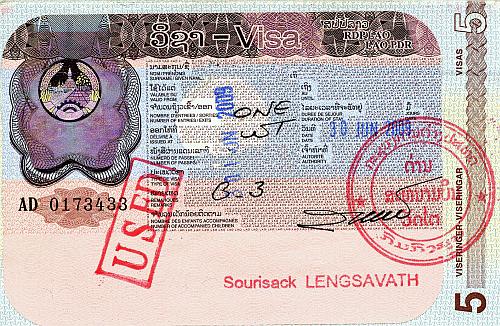
The excitement of getting a passport stamp
Holding up a red passport with a Norwegian lion on to a customs or immigration official has always been a door opener, or should I say border opener. Many years ago seasoned Norwegian travellers would assert that the Norwegian and Swiss passports were the most hassle-free passports to hold: We had no enemies. I’m not sure that is the case now.
My scanned visas and stamps are all illustrating the posts on this blog of mine. I have removed personal information like name and passport number, but not the name of the border station or date. Some photos are included in this article, and here are a few stories about them.
The concern about perhaps not getting a permit
In 1986 going from Jordan to Israel was illegal, but going to the (Israeli occupied) West Bank was not. Hush! This is what I wrote in my blog from Amman, Jordan on a Tuesday.
“At first I went to the Ministry of Interior to apply for a West Bank visa. I was told to come back on Thursday morning. I hope it will be settled. Two Japanese received a reply that they had to apply to Israeli authorities before the Jordanians could authorise them!! (That was bad treatment by the Jordanian official. The Japanese were either subject to some kind of discrimination or racism, or more likely in combination with an all too likely cause that they had told the official they were going to Israel. That is illegal. This was the third day they came here to the office. They were almost crying.) “
Two days later I added:
“The day had arrived when I was to know if I would be able to cross the Jordan River to the West Bank and Israel. It went well. I received my paper without problems. I bought a ticket with Jett to the Israeli border post with departure tomorrow morning. Price: 2.5 dinars. It was good to let go of the concern.”
The stamp that no longer exists
In 1990 I received a modest stamp in my passport at the DDR border. A year later that East German stamp would not be obtainable.
A day later I walked up to the Checkpoint Charlie in Berlin, where I one year earlier would have received another stamp.
Now the checkpoint had been abandoned.
The stamps that might have existed no longer
I have stamps from Macau and Hong Kong at a time they still existed.
They are now part of China, but they have in many ways retained a special status. Apparently they stamp now as they did in my passport back in 1985.
The unofficial looking official
In 2012 I was on the fast ferry across the Strait of Gibraltar from Spain to Morocco.
A burly man dressed in civilian clothing, cleared a corner table in the lounge and immediately a long line of people formed in front of him. Other passengers had clearly been on that ferry before. I sensed what was happening and joined the line.
A fine new Morocco entry stamp was my reward.
Red tape and disrespectful power-seeking officials
In retrospect the crossing from Mongolia to China in 2011 was interesting, but at the time it was more like annoying. Here is an excerpt from my blog:
“After endless stretches of desert, we came to the border crossing. It was a drawn-out affair. Not so much the Mongolian, as the Chinese. It’s pretty amazing, or at least something to question, that at airports they scan the passport in seconds while here they spend hours on the same procedure. (…)
The Chinese were very thorough; I even had to stand straight in front of a young idiot of an officer, who compared my face with my passport photo. He claimed he didn’t recognize me. He even told me to smile because I have a smile on the passport photo. Smiling on command makes me angry. I tried not to show feelings, but when he started to make me smile again when he handed back my passport three hours later, I thought it was silly. I could not help but asking him what he meant.
We came through.”
Read more
Here (sorry, dead link) is an interesting article from a blogger who is happy with his passport and his decision to travel the world. He provides a few scans of the contents as well and discusses why one should get a passport. That is a typical US American debate, highly unfamiliar to others in the Western world. The evidence debated in this article, and this, and here (dead link) too, is that very few Americans have a passport and they rarely use it.
When I travelled to East and South East Asia in 1985 there were almost no US Americans around. The ones that were would claim they were Canadian. In recent years that has changed considerably judging from statistics and from listening to the voice volume and accent of fellow tourists/travellers.
Another blogger writes eloquently about her brand new passport: “It is still rigid and shinny with the gold Canadian crest standing out of the dark blue background, but I will make sure that it will not remain this way for long. A passport is like life, it has no meaning until it is filled to the brim with memories of how much we lived it.”
Amen.


